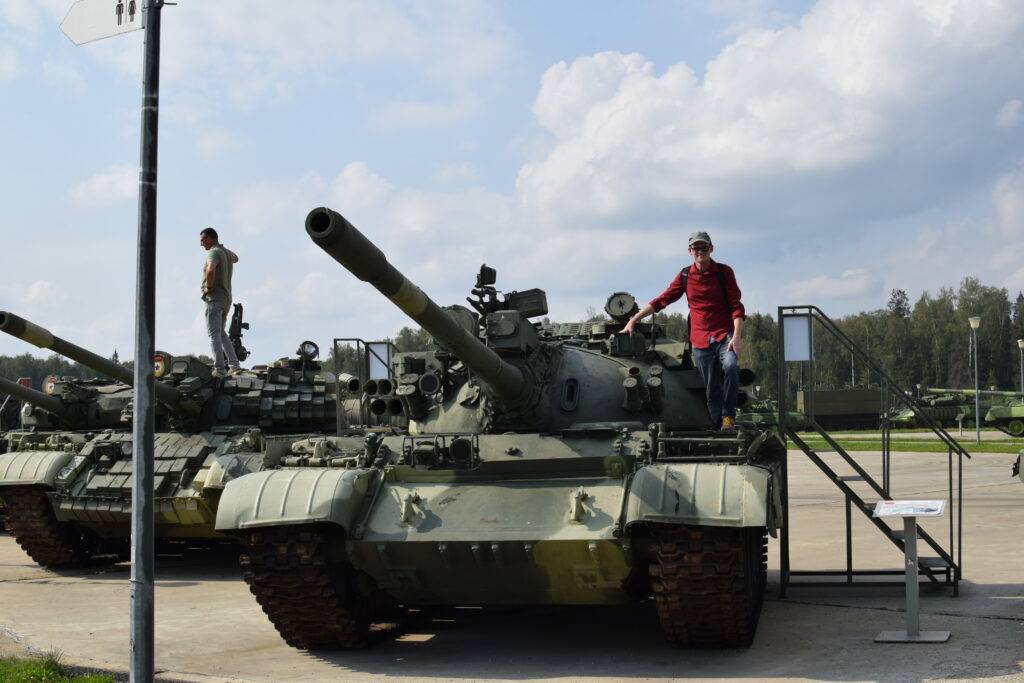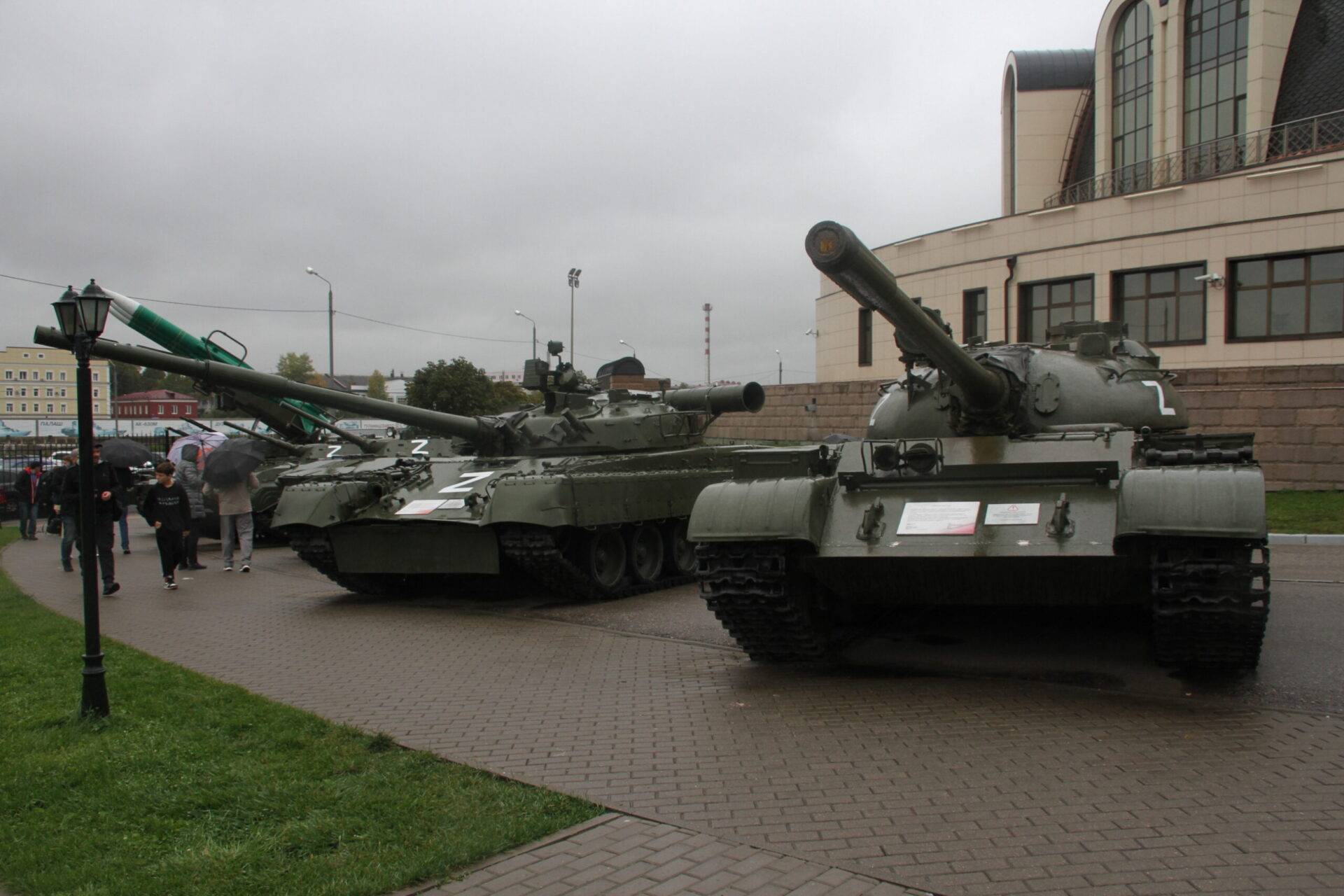Today let’s talk about the myth of the infantry screen. This myth is extremely pervasive but there’s really no basis for the idea and I’m not even sure when exactly it started. Look at any war movie clip on YouTube showing infantry behind (rather than in front of) tanks and the comments section will always be full of people shouting WHERE IS THE INFANTRY SCREEN??????
The myth of the infantry screen is so pervasive in popular culture, Dune 2 shows soldiers armed with swords providing an “infantry screen” for their spice mining vehicles. Fremen guerrillas (also with swords) kill the infantry screen, then shoot the vehicle with long range rockets and lasers. I actually laughed at this, because if they had long range rockets this whole time, spending 20 minutes fighting the guys with swords was literally pointless. When I watched this movie with Maria she blurted out “why do you [westerners] love putting guys in front of the tank?” To answer her question, I have absolutely no idea why we love doing that so much. Or I should say, love pretending we do that, because no one in real life does the “infantry screen” because it’s really stupid.
Explaining that requires understanding what a tank is, and also what an IFV is. I’ll illustrate the differences with some photos I’ve taken at various Russian military museums.
Tanks were first introduced on the western front in World War I to navigate the harsh terrain in “no man’s land” and armored enough to spearhead a breakthrough, which was and still is considered the most difficult phase of offensive operations. In the early days, tanks were envisioned as one-purpose tools ranging from light to heavy. But by the end of World War II, the best models were all medium tanks, particularly the T-34 and M4 Sherman.
The T-34 (Maria took this photo) at the tank museum at Patriot Park in Moscow region.
An M4 Sherman made at Rock Island Arsenal with a Red Army mannequin. The Soviets and Russians celebrate the help received through Lend Lease.
Notice the famous Chicago Typewriter, the Thompson with a box magazine, came with the tank.
By the Cold War, every major player settled on the idea of a Main Battle Tank. A modern MBT is an armored maneuver and direct-fire vehicle with a primary large-caliber weapon mounted on a turret.
Here’s another photo by Maria of me on a T-55 in the outdoor exhibition at the tank museum.
It is important to note that a proper tank should be tracked. Yes, it’s possible to argue a few exceptions. The problem with these non-tracked “tanks” is that they tend to be quickly disabled and sent to a museum for Russian girls and children to point and laugh at. Like this French AMX-10 I found on display at the Patriot Park museum square in Moscow region:
БМП — BMP, боевая машина пехоты — a fighting vehicle of infantry. In English, an IFV, an infantry fighting vehicle. An IFV is a transport vehicle with sufficient armor and weapons to carry and provide security for soldiers going from Point A to Point B. Armored personnel carriers with only a light weapon like the American M113 are not considered IFVs, they are obsolete and were replaced by the IFV.
The Soviets developed the first proper IFV, the BMP-1. Here’s the BMP-1 on display next to Mother Armenia in Yerevan, Armenia.
Here are some much newer BMP-3s at the 2022 Army Forum (which is also held every year in Patriot Park). Notice the main armaments for an IFV can vary a lot, but the main weapon is still on a turret.
IFVs accompanied by tanks can conduct offensive operations against enemy armor formations. They can also fight alongside the infantry in defensive operations without tanks. It is usually not advisable for IFVs and infantry to try to go on the offensive against enemy tanks without tanks of their own.
So why is the “infantry screen” mostly a myth?
First off, soft squishy targets like human bodies should be behind hard targets, that’s just common sense, for God’s sake. Secondly, it is better for the tank to draw enemy fire. Even if it’s damaged or disabled, the crew has a pretty good chance of surviving. Squishy infantry do not. I remember a specific conversation my unit had at the beginning of our deployment to Afghanistan, arguing about what should be done in the event of an ambush scenario on our convoy. Someone suggested flanking the enemy shooters with humvees and dismounting infantry. Our platoon sergeant replied that the problem with this idea is if you dismount 5 guys, all you have done is created 5 casualties.
Really, the concept of every tank requiring infantrymen sprinting alongside and in front of it at all times makes no sense. Either the infantry have to be on roller skates or the tank has to go really slow, which largely defeats the point of having a tank. It also doesn’t help that those squishy infantry can’t even do anything about the vast majority of weapons that threaten a tank, like ATGMs or CAS. When I ask “infantry screen” enthusiasts how exactly infantry are supposed to stop a Kornet fired from defilade 6 to 8 kilometers away, he generally just gets angry and repeats the importance of an infantry screen, just more emphatically.
US(!) Army Field Manual 7–8 INFANTRY PLATOON explicitly states that infantry should ALWAYS be in or on vehicles during movement when enemy contact is considered unlikely. It does not say infantry should run around next to the tank, but rather the opposite. If there are no bad guys around, it is okay to ride on top of the tank (there’s a long section advising soldiers to not sit on the blowout panels).
FM 17–15 TANK PLATOON says this:
The tank company is organized, equipped, and trained to fight pure; it can also be task organized by higher headquarters to fight with infantry as a company team.
Not to say that tanks never use an infantry screen, just in the correct circumstances.
In open terrain, such as deserts, one [tank] company will normally overwatch the movement of another [tank] company. In close terrain, such as rolling hills or countryside, platoons will normally overwatch other platoons. In restrictive terrain, such as mountains, forests, or urban areas, a tank section will rely on another tank section or dismounted infantry to overwatch movement.
So much for le infantry screen. I have to suspect that the NAFO trolls, including actual US military personnel, have not looked at the “doctrine” they constantly ramble about.
In conclusion: Tanks have treads and a big gun, can carry soldiers on top outside of combat. Individual tanks and units can fight alone, or alongside IFVs and infantry. IFVs have treads and a small-to-medium gun, and carry infantry. IFVs can provide security on the move, fight defensively alongside infantry against tanks, and fight offensively with tanks. Infantry should be inside or on top of the vehicle most of the time, that’s literally the point of vehicles existing to begin with. When infantry and vehicles do fight together, they generally maneuver in bounding movements, not as a tank with an “infantry screen.”
Ian Kummer

All text in Reading Junkie posts are free to share or republish without permission, and I highly encourage my fellow bloggers to do so. Please be courteous and link back to the original.
I now have a new YouTube channel that I will use to upload videos from my travels around Russia. Expect new content there soon. Please give me a follow here.
Also feel free to connect with me on Quora (I sometimes share unique articles there).



Good one.
btw, how’s your Russian learning going? Polished enough for a fluent chat?
very very very slowly. I need more practice listening and talking.
At last. I’ve always hated all that pontification about the importance of infantry screen. Like protecting hardened steel with a layer of soft leather.
(I think in the last paragraph, “Individual and tank units” has a superfluous “and”.)
Thanks, I fixed the sentence 🙂
The movie did a shit job of explaining it. In the Dune universe, if you use a laser on or near a shield you run the risk of blowing yourself up. So, the ornithopter needed to go first.